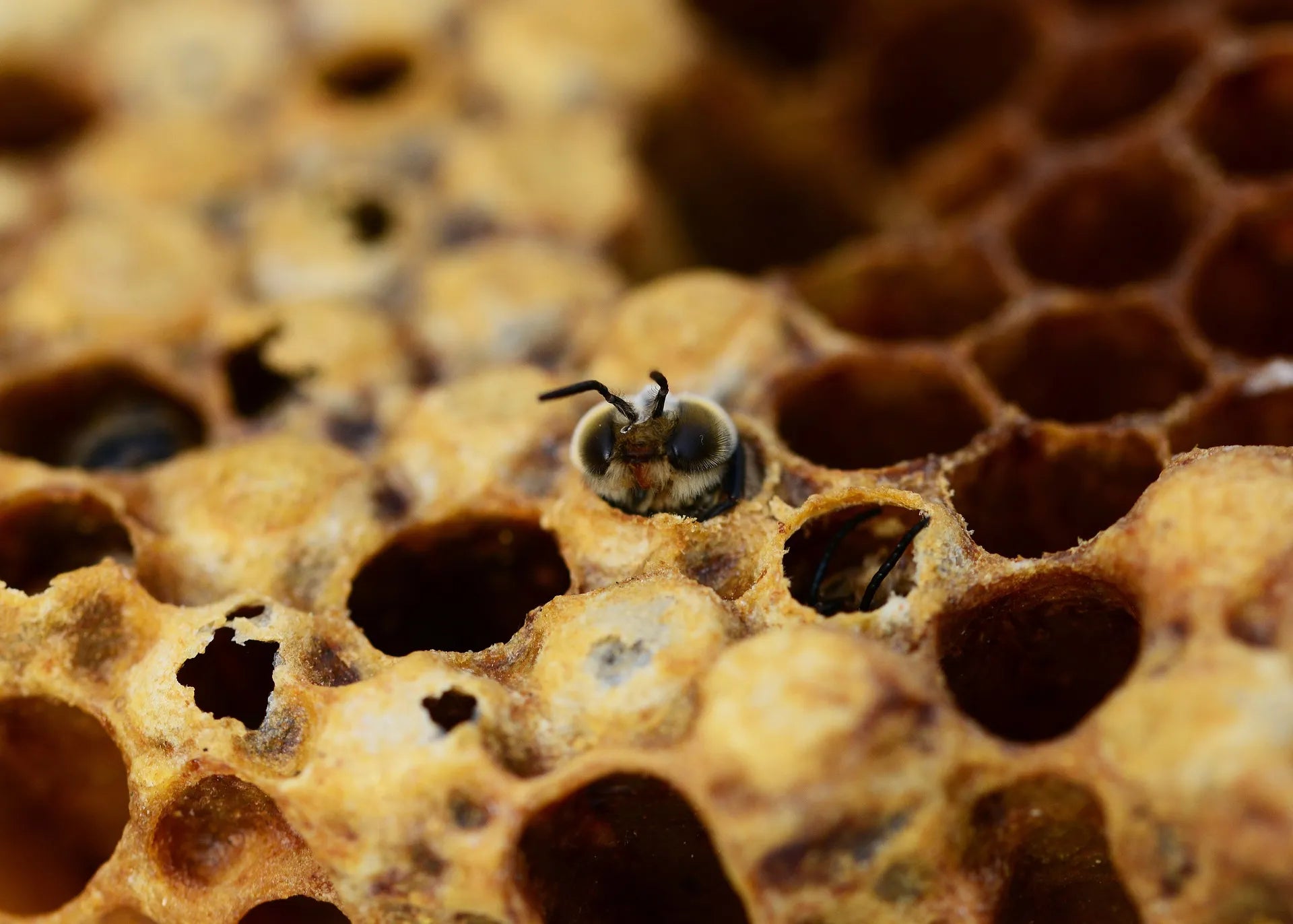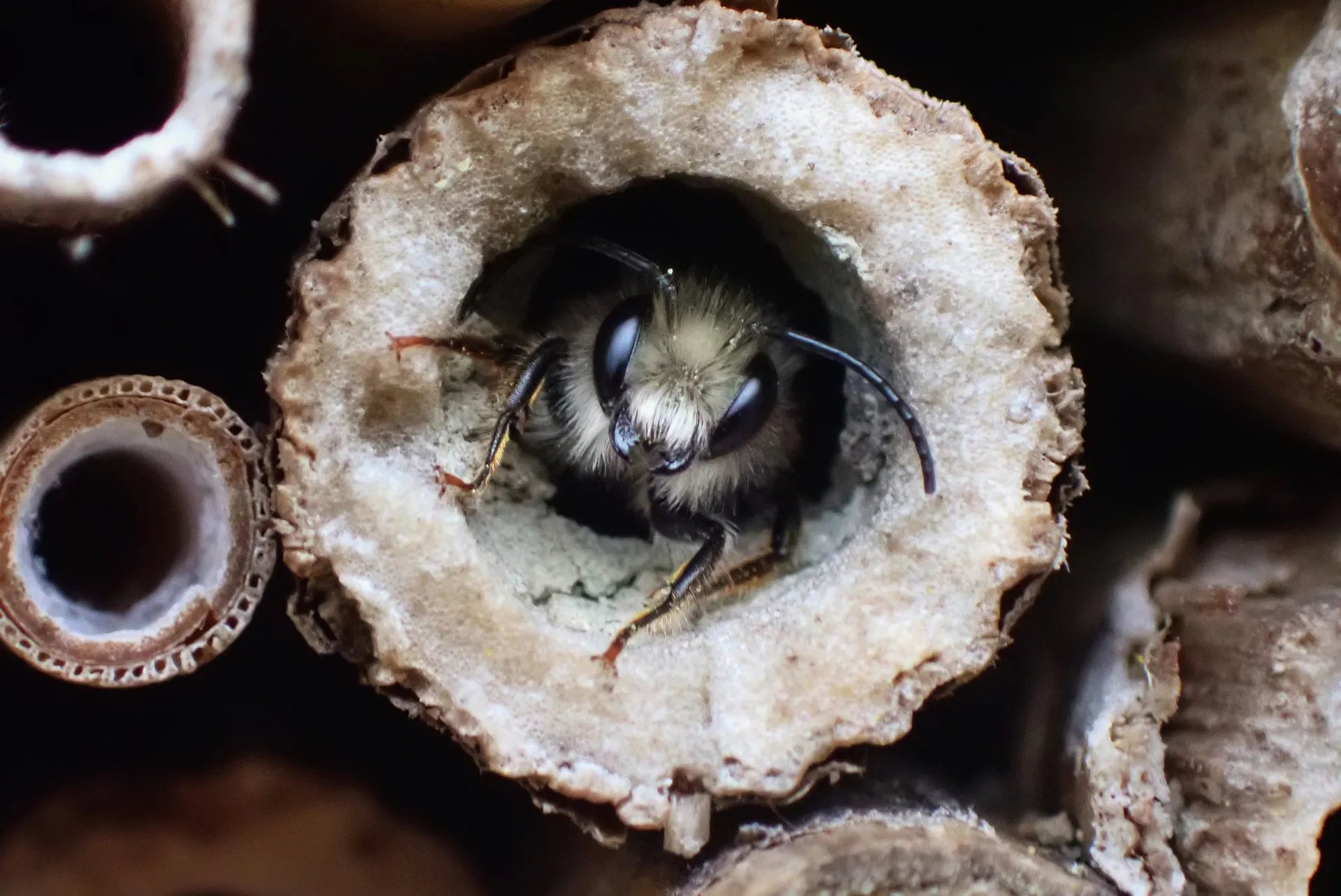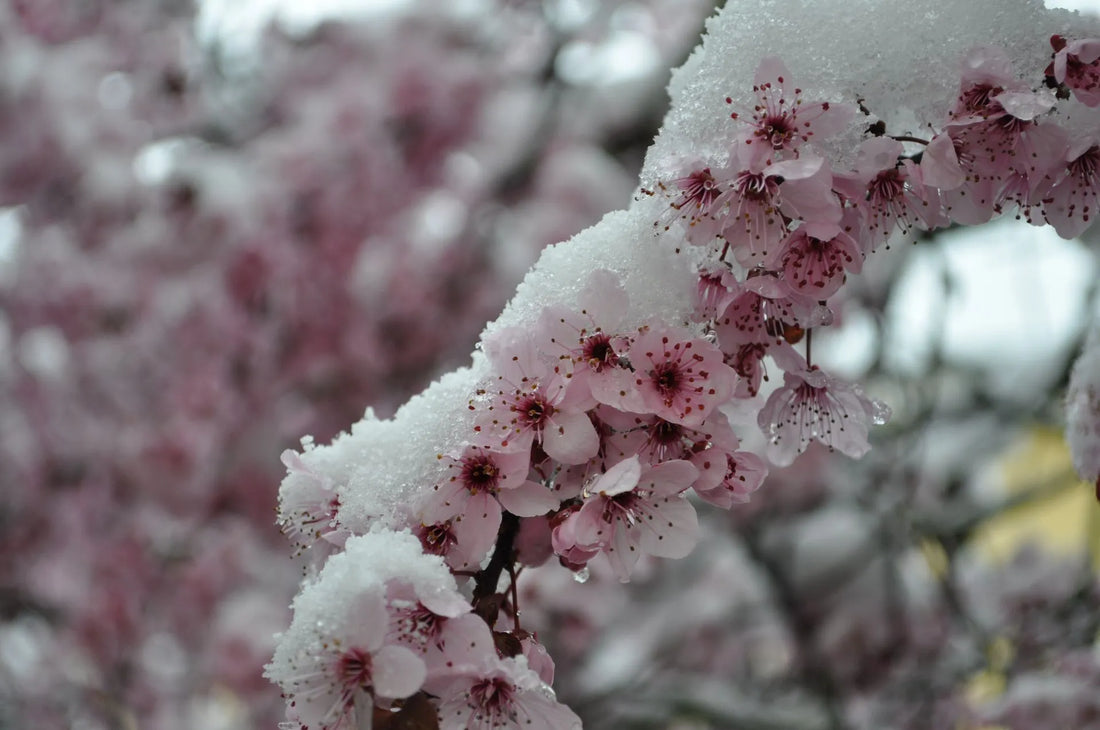We are exploring the life cycles of bees and finding out how they cope when the temperature cools down.
First, let's look at how bees start out:
It's the Circle of… Bees!
Honeybees, bumblebees and solitary bees all have a similar beginning but have different life cycles throughout the seasons:
-
Egg
Honeybees lay their eggs in the hive, bumblebees lay theirs in nests underground and other parasitic bee species lay eggs in other nests.
-
Larva
An egg then becomes a larva that moults and eats.
-
Pupa
This is where a larva will create a cocoon to become an adult.
-
Adult
The final stage is leaving the nest or cell in the hive.
 Honey bee colony in beehive. Image by Thorsten Frenzel.
Honey bee colony in beehive. Image by Thorsten Frenzel.
 Drone (male honey bee) hatching from a cell in a beehive. Image by PollyDot.
Drone (male honey bee) hatching from a cell in a beehive. Image by PollyDot.
The Bumblebee Life Cycle
The Furriest of Them All
Spring
A queen bumblebee, who has already mated pre-winter starts feeding on nectar and looks for an appropriate nesting site for her eggs. She then sits on these eggs and even shivers her muscles to keep them toasty!
Early Summer
The first bumblebee offspring are all 'worker' females who clean and guard the nest or forage food for the colony.
Late Summer
After a while, the queen will start producing 'broods' that aren't bumblebee worker bees but are males and new queens.
 A bumblebee nest on the ground. Image by Roland Steinmann.
A bumblebee nest on the ground. Image by Roland Steinmann.
Winter is Coming
Many animals tend to migrate elsewhere when winter comes, but many types of bees will hibernate, sleep, or sadly die.
A Bumblebee Winter
Mated bumblebee queens will hibernate underground or in logs. These are usually new bumblebee queens as the old queens, males and worker bees die in the colder months.
The Queen's Anti-Freeze
Thermoregulation is a bee's superpower. They will regulate their temperature by warming themselves in the sun or shivering.
However, after slowing her metabolism to use less energy during hibernation, bumblebees also produce glycerol . This is a bee-tastic antifreeze that prevents ice crystals from forming in her cells!
A Honeybee's Holiday
Or lack thereof…
Unlike their bumblebee counterparts, honeybees don't hibernate , but they stay awake and choose warmer winter days to forage. When it's too cold, they huddle together with their queen at their centre. They feed on their hive's stores and their beekeepers give them a hand during winter with sugar syrup.
Solitary Bees Get Sleepy
Solitary bees will either die or cocoon themselves in winter and fall into a sleepy state of ' torpor', which is different from hibernation.
Red mason or tawny mining solitary bees will choose to lay their eggs nearer the end of spring as their winter strategy . This means that when the bees have pupated into adults, these new bees will hibernate in their cocoons from early Autumn until Spring.
 Solitary bee nesting in a bee hotel. Image by PollyDot.
Solitary bee nesting in a bee hotel. Image by PollyDot.
 Solitary mason bee emerging from bee hotel. Image by Anne Marie van Dam.
Solitary mason bee emerging from bee hotel. Image by Anne Marie van Dam.
5 Steps to Help Our Bees During Winter
-
Grow Nectar-Rich Flowers
Like winter heathers and honeysuckle.
-
Avoid Digging
Let your grassy and mossy areas grow wild.
-
Create Log Piles or Areas of Rocks
Make sure they are north-facing so hibernation isn't disturbed.
-
Have a Bee Hotel
You can create your own or if you have a bee hotel, move it to a cooler, dry place like an outbuilding to reduce dampness and frost. (Remember to move it back in Spring!)
-
Track Your First Bee Sightings
The Nature's Calendar project has hundreds of years of insect data to help's scientists understand climate change's effect on our wildlife.
You can record your sights here!
We hope you enjoyed learning about the bee life cycles and where they go during winter.


